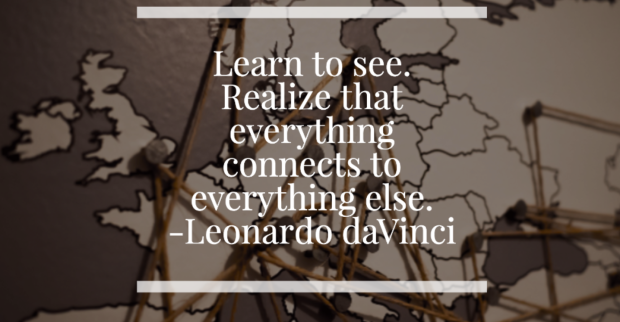As educators, we are profoundly connected to the stories of our students. We know which students had breakfast, who fought with their brother on the way in, who feels anxious in social settings, who is celebrating a big flag football win, who is mourning the anniversary of losing a parent, who believes they are stupid, we know the one that feels isolated in their classroom. We know that every child comes with a unique story, a history that none other shares. It is our business to honor the humanity in our classrooms. It is our sacred duty to honor the identity of each student in our care.
Boxed curriculum falls short of honoring the identity of your students. It wasn’t created with them in mind. It was created for a number. It was created for an outcome. Created for an average.
This isn’t to say that curriculum companies aren’t trying. They work to offer differentiation strategies, they work to “personalize” pacing. But in the end, one problem remains: they don’t know the Students-with-Names in your classroom. They don’t know the stories that walk into your classroom each morning. Can’t possibly know the dynamics of your classrooms when all those unique stories collide and create a community of learners. I’ve been involved in education since 2003, and I’ve never had a duplicate story. Never had a community of learners that interacted in exactly the same way. As educators, we have to be agile. Each day. Each hour. Each minute.
Boxed curriculum is far too static for the dynamic stories that fill a classroom. Unfortunately, it is boxed curriculum that dictates the learning in most schools. Walk into any classroom and you will see purchased curriculum. Schools even go so far as to brand themselves by the type of curriculum they’ve purchased. In the end it’s all the same. Static. Even the differentiation found in boxed curriculum is written as something that we do on behalf of students. “We will do something to our instruction so that the student can be more successful at meeting the requirements and goals set by norms.” This type of differentiation believes that by tweaking the way teachers teach, it will make students better fit the system.
At Anastasis, we don’t purchase any boxed curriculum. At all. We are identity honoring, and we have yet to find a curriculum that takes into account the many stories that fill our building. The boxed curriculum packed full of differentiation strategies can’t hold a candle to what we’ve chosen to be guided by: Inquiry. Inquiry is a natural differentiator, but it isn’t something done on a student’s behalf; rather, inquiry empowers students as their own differentiators. Inquiry opens up the world of learning. It’s connective and has depth. It’s limitless. It honors identity by putting students in the driver seat.
Boxed curriculum gives students a map of a city. It details the exact destination, the route that must be taken, the transportation that must be used, and even the time that a student should arrive at the destination. Boxed curriculum’s goal is to get students to a destination as quickly as possible. Often students don’t even see why the destination is important or how it connects to the pre-determined stops along the way.
Inquiry opens limitless possibilities and puts students in charge of charting their own course. Instead of a map of the city, they are given a globe. They get to choose the route, destination, the transportation they will use. They get to decide where they will slow down to spend extra time exploring. They get to experience the joy in the journey. With inquiry, we offer provocations that set them off, but the journey, that’s for the student. The things they will see and experience, the connections they will make, the growth they’ll experience, the collision of ideas with classmates, it will be theirs.
The beauty of inquiry is that it honors the individual. It sends the subliminal message that we trust students to be learners, that they are capable, that they can do meaningful things without outside scripting. It demonstrates the deep belief that we are all learning beings. It reveals to kids that their interests/gifts/passions ARE learning. Suddenly they recognize that all learning is connected and living. That learning isn’t about school, it’s LIFE.
To reduce learning down to a scripted curriculum is wrong. It’s insulting. It puts learning in a box, limits it. It insinuates that learning has a beginning (Chapter 1) and an end (the test). It tells kids when they hit road blocks that their is something wrong with them (“I guess I’m just not good at math/reading/science/writing/history), instead of something wrong with the route chosen for them.
Inquiry is about a growth mind-set. Students see when they hit a hard spot in learning that there are ways to push in. They realize that they can chart a completely new path of discovery. They begin to see that maybe learning isn’t even contained to the continents and traditional modes of travel. They explore the possibility of choosing the moon, rockets as a mode of transportation. When this is possible why would we only give students a map of a city and try to tell them that it is learning?
Inquiry is identity honoring. It’s learning alive. A living curriculum.

One comment